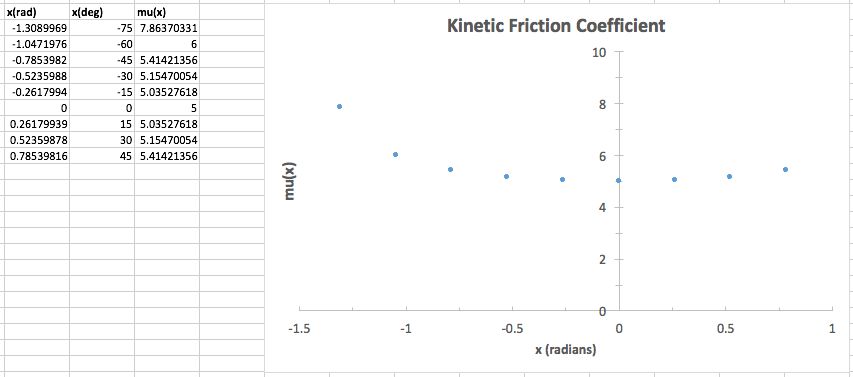An object with a mass of #7 kg# is pushed along a linear path with a kinetic friction coefficient of #mu_k(x)= 4+secx#. How much work would it take to move the object over #x in [(-5pi)/12, (pi)/4]#, where x is in meters?
1 Answer
#w_"push" = ul(7((8pi)/3vecg + (2pi)/3vecgsecx))# #"J"#
#x in [-(5pi)/12, pi/4]#
#vecg > 0#
And the work itself is done from the perspective of the worker.
Well, I would use a conservation of energy approach, assuming the object has no kinetic energy (i.e. it does not keep moving if we stop pushing). We just need to overcome the barrier of kinetic friction over a distance
#DeltaE = 0 = w_(vecF_k) - w_"push"# where:
#w_"push"# is the work one would have to do to push the object#pi/4 + (5pi)/12 = (2pi)/3# meters forward.#w_(vecF_k) = vecF_kDeltax# is the counteracting work done by the kinetic friction.#vecF_k = mu_kvecF_N# is the friction force, and#vecF_N# is the normal force.#mu_k# is the coefficient of kinetic friction.
Here, we do the work from the perspective of ourselves, so
As for

Including the horizontal sum of the forces:
#sum_i vecF_(x,i) = vecF_"push" - vecF_k = mveca_x#
We realize that by not knowing the acceleration, we couldn't solve for
We do, however, find a use in including the vertical sum of the forces:
#sum_i vecF_(y,i) = vecF_N - vecF_g = vecF_N - mvecg = 0# ,where our convention is that
#vecg > 0# (and the negative is in the subtraction sign), we have:
We now have an expression for
#color(blue)(w_"push") = vecF_kDeltax#
#= mu_kvecF_N Deltax#
#= (4 + secx)(mvecg)((2pi)/3)#
#= (4 + secx)("7 kg" xx g" m/s"^2)((2pi)/3 "m")#
#= color(blue)(7((8pi)/3g + (2pi)/3gsecx))# #color(blue)("J")#
The work is seen to be a function of the position (but only in
The initial push should then be hardest, the middle of the distance should be easiest, and then near the end of the distance should be slightly harder.

